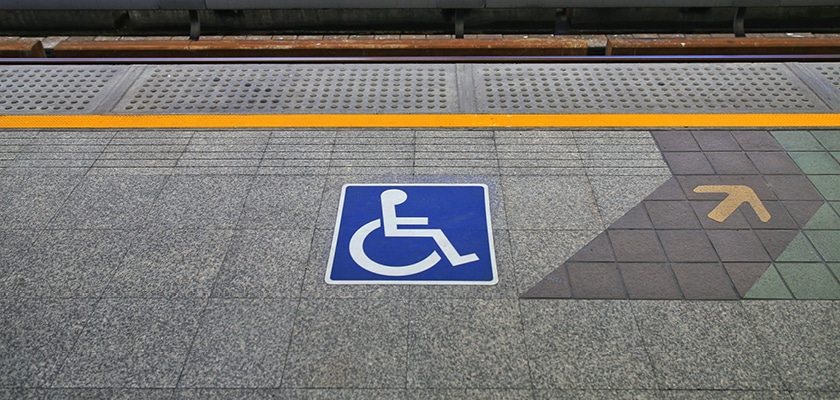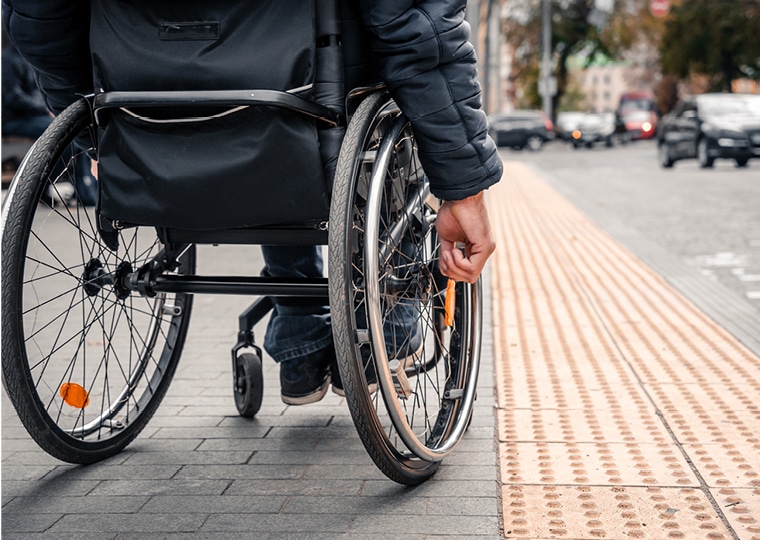
It’s a scenario that’s more common than it should be: a client, following the requirements of the federal Americans with Disabilities Act (ADA), has conducted a self-evaluation to determine if its programs, services and activities are compliant with the ADA and are accessible to all users. Following the self-evaluation, the client creates a Transition Plan – an action plan that outlines the steps necessary to remove any barriers for those with disabilities. A design team and contractor are brought in, changes are made and then, when an inspector is brought in, the client discovers that their building is still not compliant.
Now what happens?
The truth is, since the U.S. Department of Justice enacted the ADA Standards for Accessible Design in 2010 – which set minimum requirements, both scoping and technical, for existing and newly constructed or altered state and local government facilities, public accommodations, and commercial facilities – removing barriers as described in a Transition Plan, and being fully compliant with ADA Standards, has proven to be a challenging endeavor that may require a change in thought process.
Even though the ADA was first enacted in 1992 and ADA design standards have been in place for the past 13 years, creating and maintaining infrastructure so that it is equitable and accessible for all users remains crucially urgent, and in certain jurisdictions, an unaddressed need.
Keep in mind that in communities across the country, there is infrastructure in need of accessibility upgrades despite:
- More than one in four Americans have a disability (27%)
- 12.1% have a mobility disability, including serious difficulty walking or climbing stairs
- 12.8% have a cognition disability with serious difficulty concentrating, remembering or making decisions
- 7.2% have an independent living disability with difficulty doing errands alone
- 6.1% are deaf or have serious difficulty hearing
- 4.8% have a vision disability with blindness or serious difficulty seeing even when wearing corrective lenses
- 3.6% have a self-care disability with difficulty dressing
While creating an ADA Transition Plan is an important and necessary step in creating more accessible communities, what continues to flummox municipal leaders and building owners is that several distinctions exist between ADA Standards for Accessible Design and the International Building Code (IBC), the base code standard used throughout the United States that addresses health and safety concerns for buildings.
In a recent presentation to the Texas Chapter of the American Public Works Association, I discussed just how costly it can be for clients and building owners to not fully understand the nuanced differences between the IBC and ADA design standards. Even in instances where both a Self-Evaluation and Transition Plan are conducted, buildings that are not in compliance with ADA design standards subject the owner/client to legal liability, or can be costly in other ways, including adding expense from contractor change orders, and of course, added time to construction.
For years, our team has provided support and expertise to clients to help them navigate these complexities and execute on a successful Transition Plan. For more than 30 years, we have established a track record on providing guidance on how to best interpret disability rights laws for government agencies, architects, engineers, attorneys, and business owners.
These distinctions include how accepted and compliant IBC tolerances (typically about a 1/4 of an inch) are actually not compliant with ADA design standards where even tolerances as small as 1/8” matter. Additionally, when using a level to measure a slope, ADA Best Practices recommends a contractor use a 2-foot level (approximately the same dimensions as a wheelchair), rather than the more widely used 4-foot level.
Having this knowledge before a Transition Plan is put into action can make a huge difference in terms of time, cost and reputation. And it ultimately helps us all reach the ultimate goal of these improvements: to allow people to live more independently, to use government resources more efficiently, and to provide more opportunities to everyone.

David Wegener is a project manager for MTC, an STV Company, where he leads a team of accessibility specialists, data collectors and analysts, and website analysts to evaluate and identify barriers to accessibility within Title II and Title III facilities, public rights-of-way, parks and websites.






